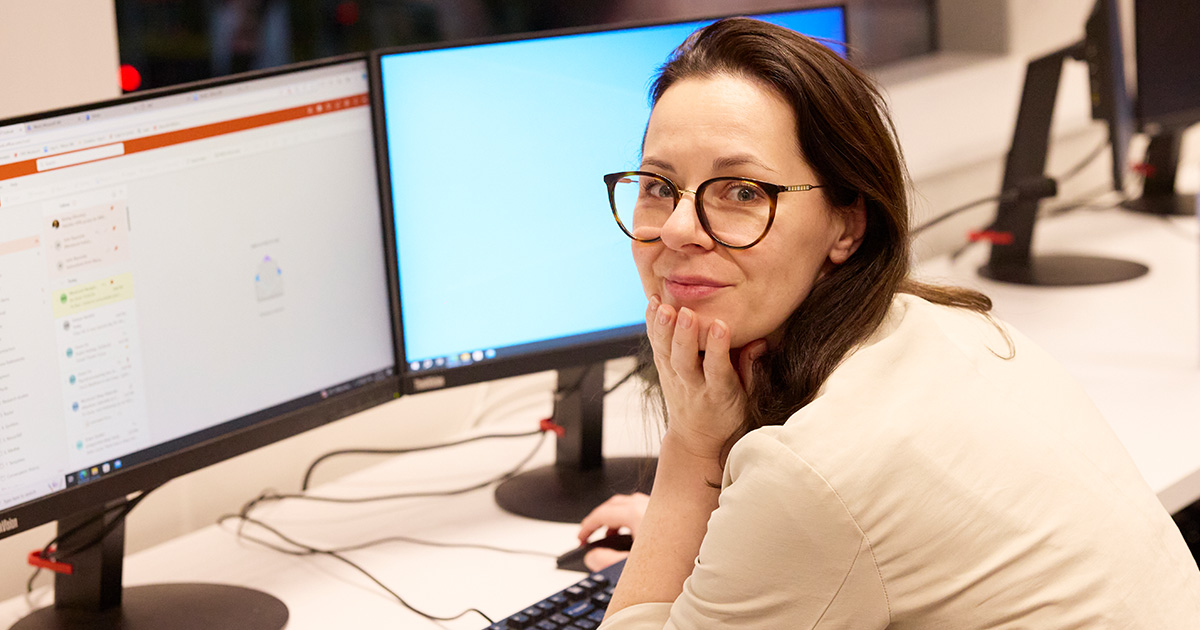The Woolcock Institute of Medical Research

New sleep lab a dream come true
Do sleep scientists dream of better sleep?
For the better part of 2023, the Woolcock Clinic’s Sleep Lab Manager, Gosia Bronisz, did. And since April this year she has watched her dreams translated into reality.
When the Woolcock transferred its affiliation to Macquarie University at the start of 2023 and plans for the fit-out of our brand-new purpose-built facility at Macquarie Park were being finalised, Gosia was consulted about her wish list for the sleep labs.
When the first sleep studies were conducted at our new facility in April this year, and since, Gosia has watched as patients enjoy a better sleep than many of them thought was possible.
“The first thing we wanted was to have nice spacious areas for the patients – the bedrooms themselves, the area around the bedrooms, the patient lounge. Everything in this facility is really nice and brand new. It’s a friendly environment – it doesn't have a hospital or clinic vibe, it’s more of a hotel vibe.
“We get a lot of positive feedback. Patients are surprised that this is what a sleep study at the Woolcock looks like because I think they expect a small room with a hospital bed and that’s all. We had one patient who asked for the brand of the bed we use because, she said, it was so comfortable.”
Want to stay up to date with our research on sleep and respiratory conditions?
Sign up to our monthly newsletter
A BED FOR EVERYONE
By providing such a good night’s sleep, an in-lab sleep study can rule out environmental factors such as noise, heating and cooling, a restless partner, pets or children. But, for those who are anxious or just want to sleep in their own bed, home-based sleep studies are also offered if their GP or physician suspects moderate to severe obstructive sleep apnea (OSA) and no other disorder.
That being said, the needs of a wide variety of patients have been catered for in the Woolcock’s new sleep labs. For day studies such as Multiple Sleep Latency Tests (MSLT) and Maintenance of Wakefulness Tests (MWT), there is a room fitted with its own kitchenette and private lounge area so the patient is not disturbed by others. There are four rooms that accommodate a carer staying overnight with the patient for paediatric sleep studies, those with cognitive impairment or anxiety (“If you'd like to have someone stay with you, that's enough reason. There’s no difference in cost either"). There are two fully accessible rooms for those in wheelchairs, one of which can also accommodate a carer. And our new beds have a weight limit of 220kg so we can accommodate bigger patients.
“The sound proofing we have here would be better than most other labs,” Gosia continues. “And, because we are larger than other labs – we have 11 beds while others have two to six at most – we have two to five technicians working overnight. That means that if you have an unusual sleep pattern, say you go to sleep at 3:00am and wake at midday, we can accommodate that.”
SIGNAL LOUD AND CLEAR
That also means that our sleep technicians, many of whom have conducted thousands of sleep studies and have years of experience, have seen everything from eating while asleep to a young woman who weighed less than 50kg with severe OSA.
“While many of the people we see fit the stereotype for OSA, almost 50 percent aren’t overweight, middle-aged or male. It can be a problem with anyone. So, if you think your tiredness might be due to OSA, it's worth checking.”
That experience also means that they can guarantee a quality sleep recording. Every in-lab study involves more than 20 sensors which monitor brain patterns and movements as well as video and audio recording.
“Our technicians, they all understand what they’re looking at so they can easily recognise what's the real signal that gives them good quality reading and what's an artefact they need to fix – such as an electronic device near the equipment that can interfere with the signal.
“And, we have the experienced sleep physicians who can then take that reading and provide the comprehensive commentary on a patient’s sleep architecture which means they get the best treatment possible.”










